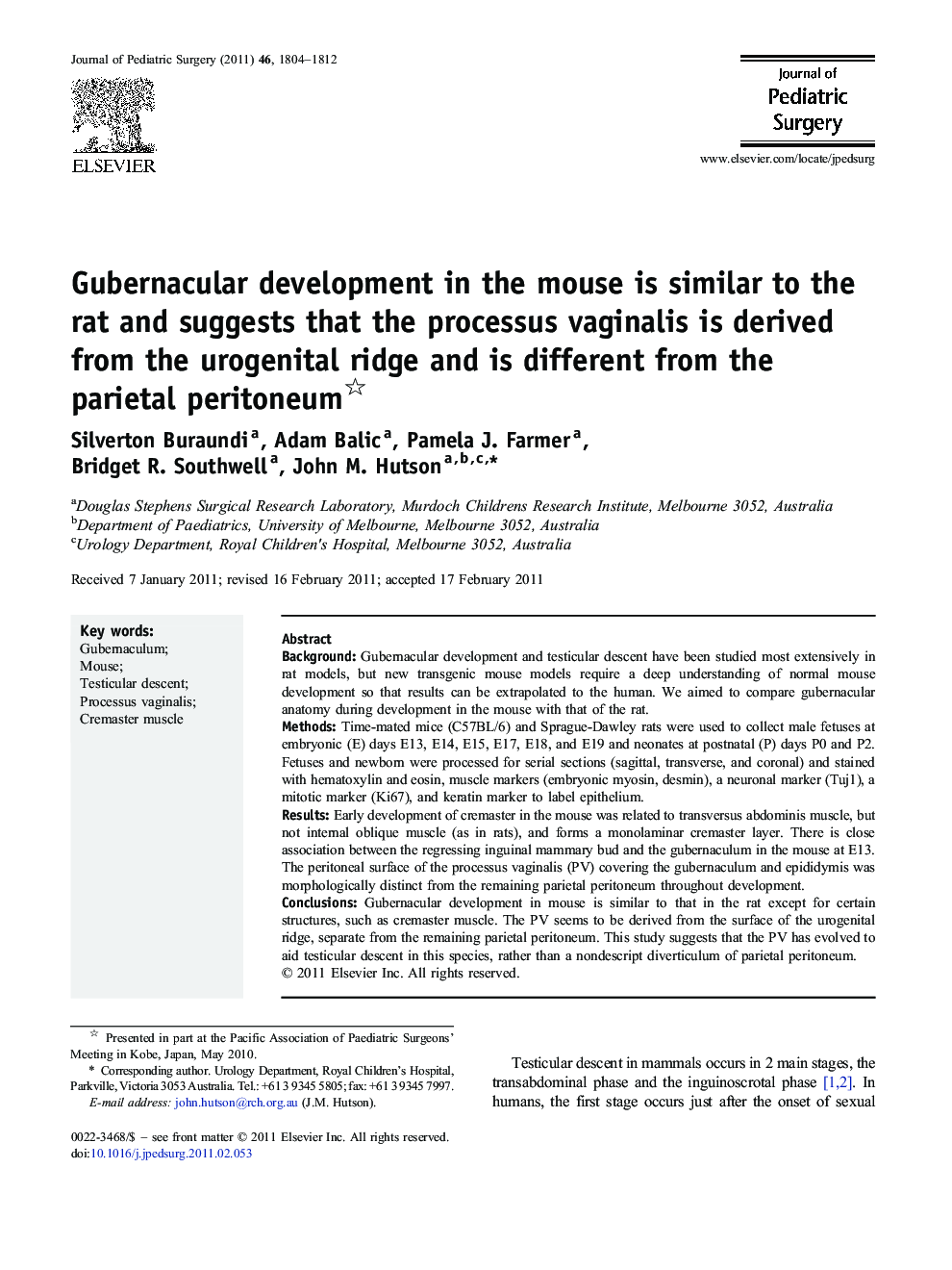| کد مقاله | کد نشریه | سال انتشار | مقاله انگلیسی | نسخه تمام متن |
|---|---|---|---|---|
| 4156967 | 1273784 | 2011 | 9 صفحه PDF | دانلود رایگان |

BackgroundGubernacular development and testicular descent have been studied most extensively in rat models, but new transgenic mouse models require a deep understanding of normal mouse development so that results can be extrapolated to the human. We aimed to compare gubernacular anatomy during development in the mouse with that of the rat.MethodsTime-mated mice (C57BL/6) and Sprague-Dawley rats were used to collect male fetuses at embryonic (E) days E13, E14, E15, E17, E18, and E19 and neonates at postnatal (P) days P0 and P2. Fetuses and newborn were processed for serial sections (sagittal, transverse, and coronal) and stained with hematoxylin and eosin, muscle markers (embryonic myosin, desmin), a neuronal marker (Tuj1), a mitotic marker (Ki67), and keratin marker to label epithelium.ResultsEarly development of cremaster in the mouse was related to transversus abdominis muscle, but not internal oblique muscle (as in rats), and forms a monolaminar cremaster layer. There is close association between the regressing inguinal mammary bud and the gubernaculum in the mouse at E13. The peritoneal surface of the processus vaginalis (PV) covering the gubernaculum and epididymis was morphologically distinct from the remaining parietal peritoneum throughout development.ConclusionsGubernacular development in mouse is similar to that in the rat except for certain structures, such as cremaster muscle. The PV seems to be derived from the surface of the urogenital ridge, separate from the remaining parietal peritoneum. This study suggests that the PV has evolved to aid testicular descent in this species, rather than a nondescript diverticulum of parietal peritoneum.
Journal: Journal of Pediatric Surgery - Volume 46, Issue 9, September 2011, Pages 1804–1812